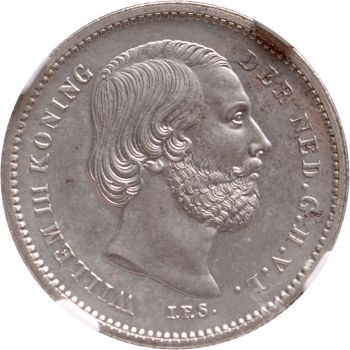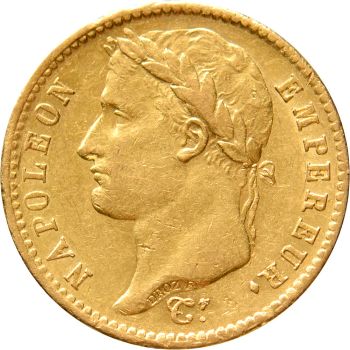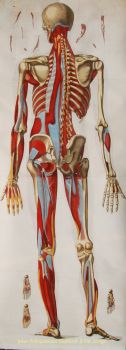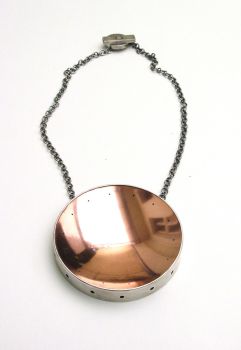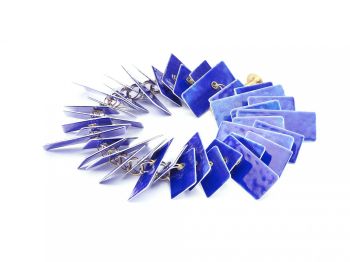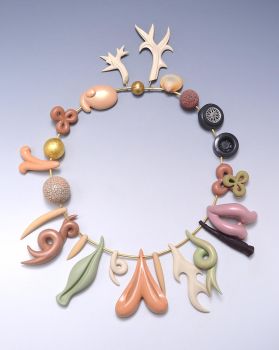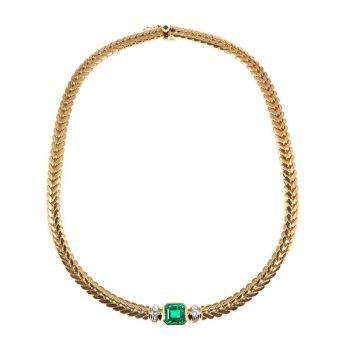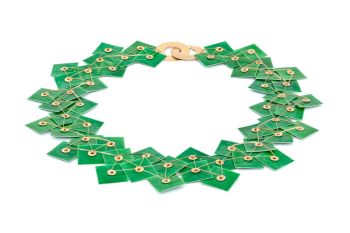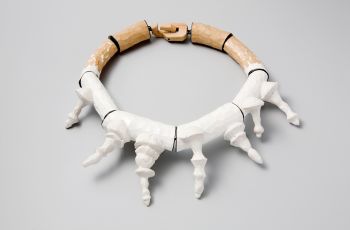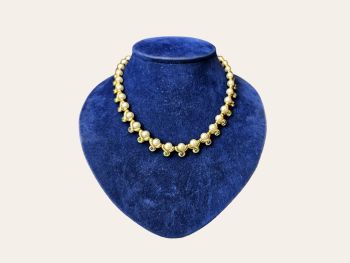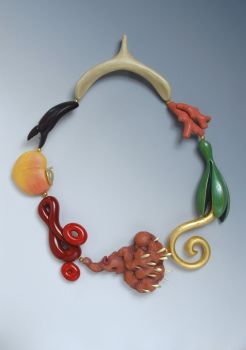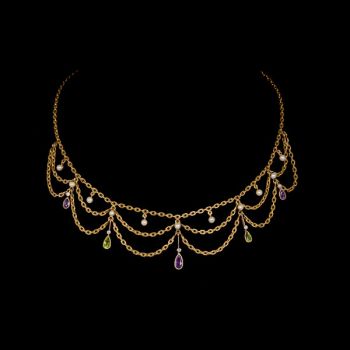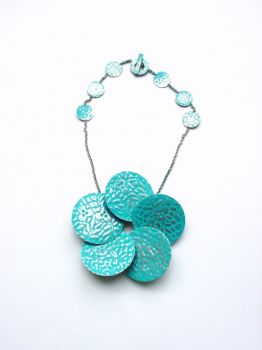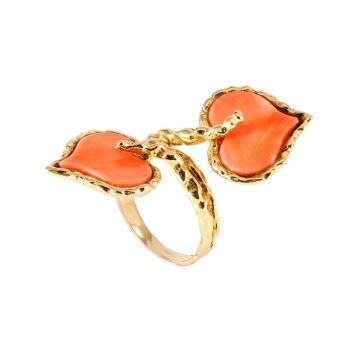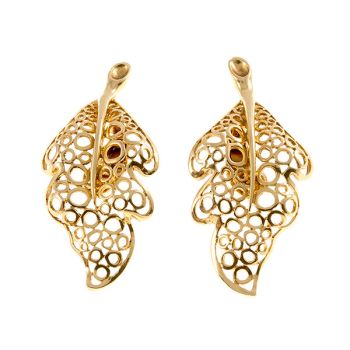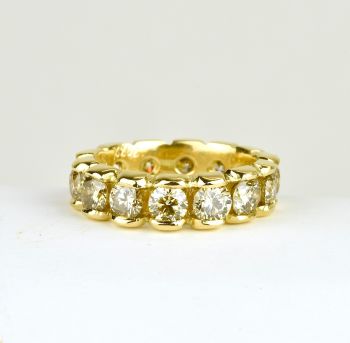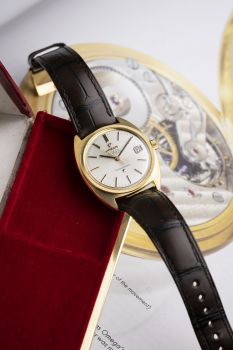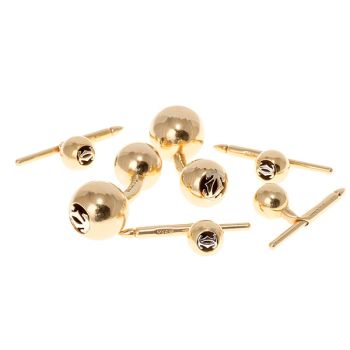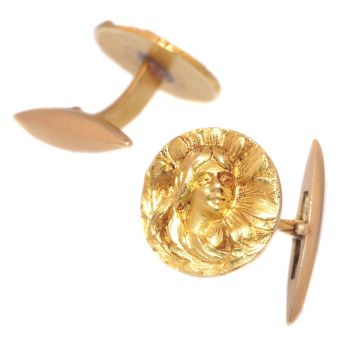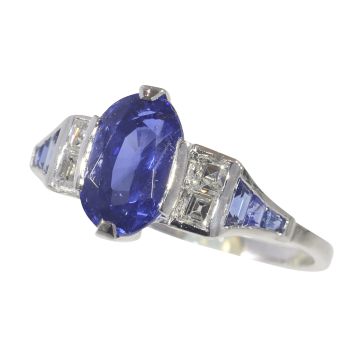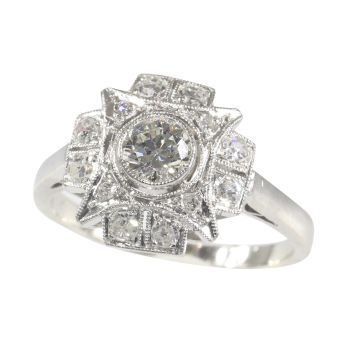Colar francês de ouro antigo com esmalte, o chamado collier d'esclave 1810
Artista Desconocido
Adin Fine Antique Jewellery
- Sobre la obra de arte
Antique jewelry object group: necklace
Condition: excellent condition
- (more info on our condition scale)
Country of origin:France
Style: Empire - The Empire style, sometimes considered the second phase of Neoclassicism, is an early-19th-century design movement in architecture, furniture, other decorative arts, and the visual arts followed in Europe and America up to around 1830. Thestyle originated in and takes its name from the period when Napoleon I ruled France, known as the First French Empire, where it was intended to idealize Napoleon's leadership and the French state. The style corresponds to the Biedermeier style in theGerman-speaking lands, Federal style in the United States and to the Regency style in Britain. An earlier phase of the style was called the Adam style in Great Britain and "Louis Seize" or Louis XVI, in France.
- See also: Empireor more info on styles
Period: ca. 1810
- (events & facts of this era, poetry of this era, fashion of this era)
Material: 18K bi-color (yellow and red) gold
- (more info on precious metals)
Technique: Enamelling is an old and widely-adopted technology. The ancient Egyptians applied enamels to pottery and stone objects. The ancient Greeks, Celts, Russians, and Chinese also used enameling processes on metal objects. Enamel is the colorful result offusing powdered glass to a substrate by firing, usually between 750 and 850 degrees Celsius. The powder melts and flows and hardens to a smooth, durable vitreous coating on metal, glass or ceramic. According to some sources, the word enamel comes fromthe High German word smelzan (to smelt) via the Old French esmail. Used as a noun, "an enamel" is a usually small decorative object, coated with enamel coating, such as a champlevé or a cloisonné (different techniques).
The type of enameling is typical for the city Bresse in France, hence the name Bresse Enamel.
Extra information: Collier d'esclavage- Esclavage is French and literally it means slavery. We'll leave it to your imagination to give an interpretation to this naming. It is a type of necklace composed of three or more chains or strings of beads or jewels in which thechains or strings hang approximately equidistant from each other. They were worn in Normandy as peasant jewelry in the mid-18th century. Such jewels were in many regions of France the most beautiful jewel offered by the bridegroomto his bride the day of their wedding. The definition of 'collier esclavage' appears for the first time in the 'Dictionnaire de Trévoux' in 1752. This necklace knows a very large geographical diffusion. In Normandy thegold pieces were often engraved. A collier d'esclave is an extremely rare article to find and we are proud to be able to offer one here.
Hallmarks: The French hallmark depicting a rooster's head which was used in France for 18K gold around 1810.
- (more info on hallmarks)
Dimensions: length 51,00 cm (20,08 inch) cm
Weight: 13,90 gram (8,94 dwt)
Reference Nº: 15128-0176
Copyright photography: Adin, fine antique jewelry
- Sobre el artista
Puede suceder que un artista o creador sea desconocido.
Algunas obras no deben determinarse por quién está hecho o por (un grupo de) artesanos. Algunos ejemplos son estatuas de la Antigüedad, muebles, espejos o firmas que no son claras o legibles, pero también algunas obras no están firmadas en absoluto.
También puedes encontrar la siguiente descripción:
•"Atribuido a …." En su opinión, probablemente una obra del artista, al menos en parte.
•“Estudio de….” o “Taller de” En su opinión, una obra ejecutada en el estudio o taller del artista, posiblemente bajo su supervisión
•“Círculo de…” En su opinión, una obra del período del artista que muestra su influencia, estrechamente asociado con el artista pero no necesariamente su alumno.
•"Estilo de …." o “Seguidor de…”. En su opinión, una obra ejecutada al estilo del artista pero no necesariamente por un alumno; puede ser contemporáneo o casi contemporáneo
•"Manera de …." En su opinión una obra al estilo del artista pero de fecha posterior
•"Después …." En su opinión, una copia (de cualquier fecha) de una obra del artista
•“Firmado…”, “Fechado…” o “Inscrito” En su opinión, la obra ha sido firmada/fechada/inscrita por el artista. La adición de un signo de interrogación indica un elemento de duda.
•“Con firma…”, “Con fecha…”, “Con inscripción…” o “Lleva firma/fecha/inscripción” en su opinión la firma/fecha/inscripción ha sido añadida por alguien que no es el artista
¿Está interesado en comprar esta obra de arte?
Artwork details
Related artworks
- 1 - 4 / 12
Artista Desconocido
Set Franse Empire Pendules / Empire Lectura penduleearly 19th
Precio a consultarKuipers Kunst & Antiek
Artista Desconocido
Set of eight gouache drawings1799 - 1801
Precio a consultarRobert Schreuder Antiquair
Artista Desconocido
Pulseira de diamante do século 18 com entalhes de 2.000 anos1790
€ 23.000Adin Fine Antique Jewellery
 curada por
curada porDanny Bree
1 - 4 / 14- 1 - 4 / 24
- 1 - 4 / 24
- 1 - 4 / 12









